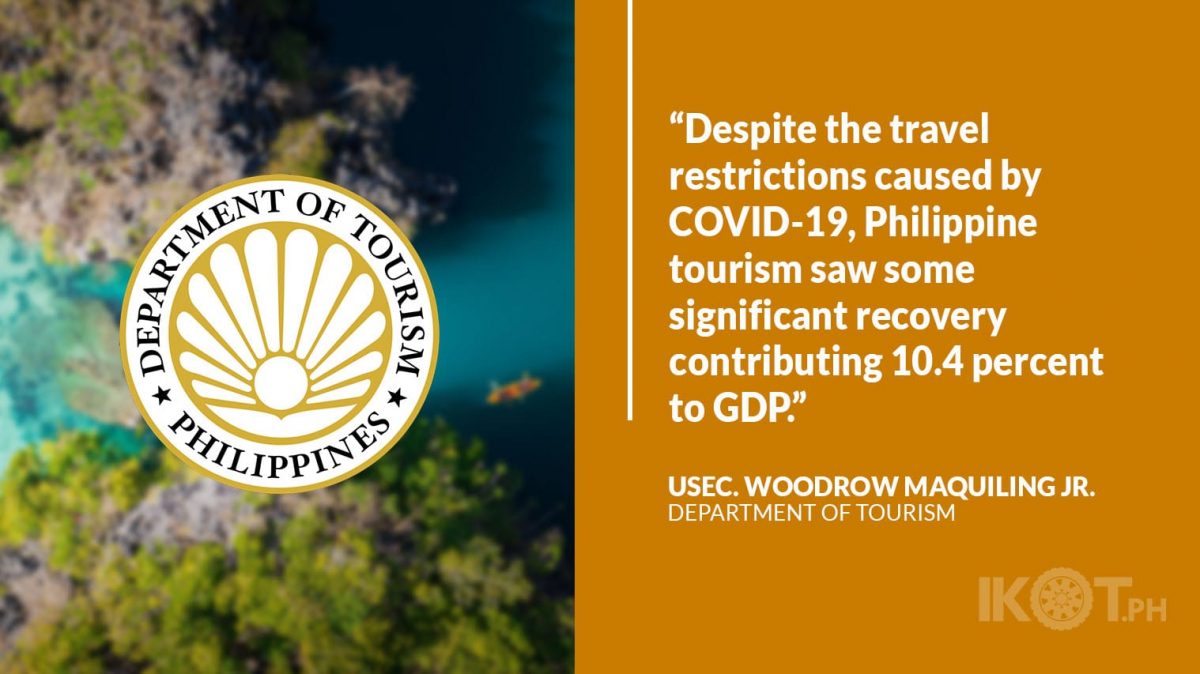The impressive ranking of the Philippines as the world’s fourth fastest-growing economy in 2021 was one of the topics that opened the discussions at the recently concluded Routes Asia 2022 held at the Da Nang International Exhibition Fair Center in Vietnam.
“Despite the travel restrictions caused by COVID-19, Philippine tourism saw some significant recovery contributing 10.4 percent to GDP in 2021—thanks to our people-centered initiatives which aimed, first and foremost, to keep our tourism workers safe and sustain our MSMEs,” Department of Tourism (DOT) Undersecretary Woodrow Maquiling, Jr. said during the Routes Asia “Panel Trends Discussion: Tourism Rebound – Future Travel” quoting the World Travel & Tourism Council’s latest Economic Impact Report.
Maquiling led the 14-man delegation from the Philippines namely Clark International Airport Corporation and Luzon International Premier Airport Development (LIPAD) Corporation’s Chief Executive Officer Bi Yong Chungunco; Civil Aviation Authority of the Philippines (CAAP)’s OIC-Corporate Planning Office, Marco Antonio Javier; Mactan Cebu International Airport Authority (MCIAA)’s Business Development Specialist Roland Gabby Acosta; Philippine Airlines’ VP for Network Planning Christoph Gaertner, AVP for Network and Fleet Planning Bryan Ang; GMR Megawide Cebu Airport Corporation’s (GMCAC) Head for Airlines Marketing and Tourism Development Aines Librodo; and Cebu Pacific’s Network Management Manager Margaret Gelsana.
Speaking before senior decision-makers from leading regional carriers, representatives from trade associations, airline boards of directors, airports, and government ministries, the tourism official opened the discussions tackling the DOT’s calculated strategies that included its massive vaccination of tourism workers, investment in human capital, and provision of soft loans to small business players as key to the industry’s remarkable recovery.
“It is essential that we recover in tourism because it translates to national recovery. “
“It is essential that we recover in tourism because it translates to national recovery. With direct, indirect, and induced effects, we have achieved as much as 22.5 percent of tourism’s contribution to the country’s GDP pre-pandemic,” he said referring to the tourism sector’s contribution of $92.6 billion to the nation’s economy before COVID-19.
Meanwhile, Amanda Byrne, General Manager at Queensland Airports, underscored how they have kept their market “warm” by capitalizing on a domestic-driven campaign “Holiday Here This Year” which encouraged Australians to support tourism operators and communities around the country by planning a domestic holiday.
“In every crisis there is opportunity.”
Asked what important lesson COVID-19 has taught airlines, Jay Lingeswara of VietJet Air was vocal in emphasizing that in “every crisis there is an opportunity” which led the international low-cost airline to invest heavily in its digital marketing.
Phillip Nguyen, Chief Executive Officer of IPP Travel Retail, agreed that new opportunities include consumer trends and behaviors, referring to the current market in Asia as our “most lucrative ones” right now.
In 2016, the Philippines hosted Routes Asia at the SMX Convention Center in Manila, attended by more than 1,000 foreign and local delegates.
The DOT has been sending delegations to the annual gathering of aviation policy makers, airport managers, destination representatives, and aviation suppliers.
Over the last five years, the Philippines was able to rake additional annual air seats to the Philippines from 477,152 to as much as 653,744 from China, Macau, Taiwan, Japan, South Korea, Vietnam, and Hong Kong.
Now on its 18th edition, Routes Asia is the premier event for airports, airlines, tourism authorities, policy leaders, keynote speakers, and exhibitors to meet, do business, and plan for the future.


